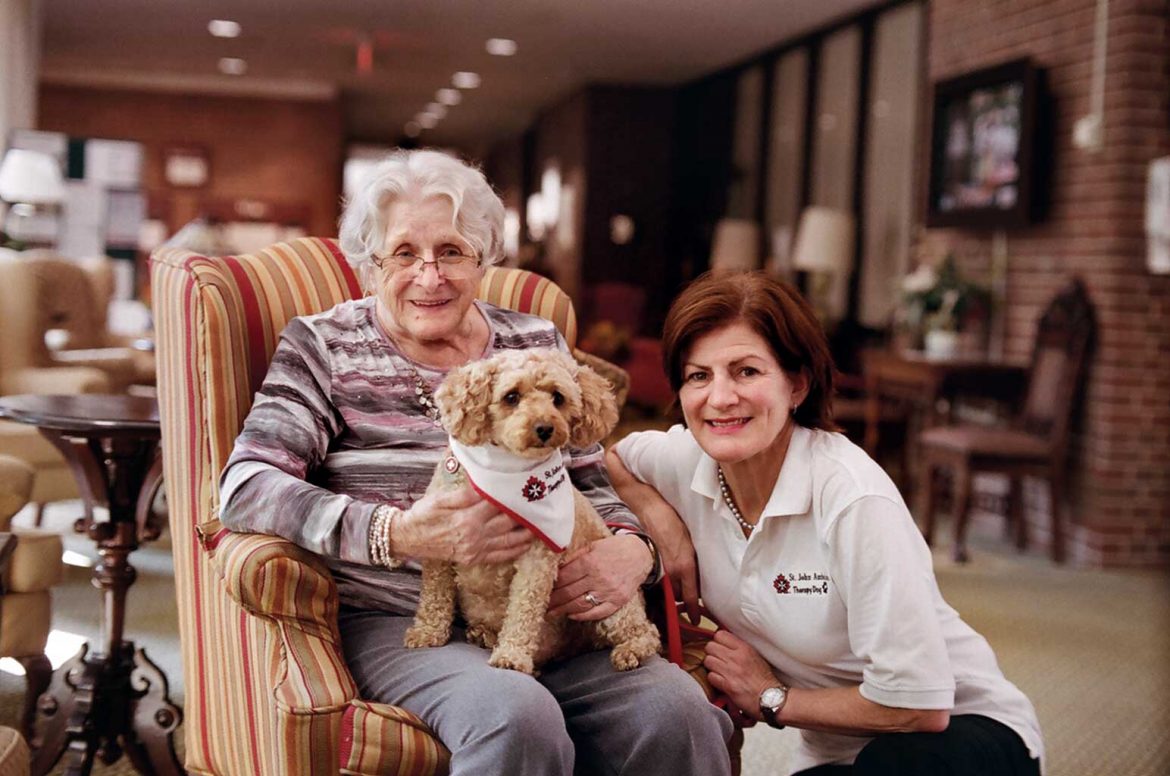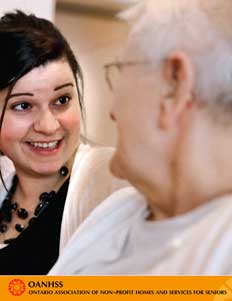Messiah College Office of Sustainability
30 minutes with the CEO of the Ontario Association of Non-Profit Homes and Services for Seniors (OANHSS)
BUSINESS VIEW: I saw the founding date was around 1919 and your association is coming up on a significant anniversary.
DONNA RUBIN: Yes, we’ll be celebrating 100 years in 2019. We’re one of the oldest healthcare associations that I’m aware of in this part of the world.
BUSINESS VIEW: You may be one of the oldest of any kind of association we may be aware of as well – not too many of them last that long, no matter what they’re doing.
RUBIN: Yes, it’s interesting that people came together at that time and decided that an association of providers was important. They had a common mission to provide care to the elderly — and infirm — at that time. They shared a belief in not-for-profit delivery of services and that has stood the test of time.
BUSINESS VIEW: What were some of the reasons back in 1919 that made the founders think this was what they needed to do and this is the time to get it done?
RUBIN: At the time, people were put into houses of refuge (as long-term care homes were called then), because they were often poor or didn’t have family to look after them. The homes were like poorhouses, and the people were often made to work — yet they needed care as well. So there were matrons that looked after these people, but it certainly wasn’t the person-centered model of care that we support today.
BUSINESS VIEW: Talk about the association and the role back then vs. the role now. Obviously, 96 years changes some things and the realities today are far different than they were back then. Can you talk about how the organization’s role has changed over the years?
RUBIN: We now very much look at the person as a whole, and person-centered care is a philosophy that permeates many long-term care homes and is a focal point for our membership. Our members also continue to believe very strongly in not-for-profit delivery. They’re mission-driven and not bottom-line driven, and those values continue today. So they are very much trying to support the individual. And they also support each other. Being not-for-profit, they’re willing to share with their colleagues, and share advice, support and information in a way that makes the association a very special environment.
BUSINESS VIEW: What sorts of numbers do you have for the membership right now and how do they break down? What are the different types of members?
RUBIN: There’s a whole continuum from lighter services to heavier services. We have charities and not-for-profits that provide long-term care, and they often have their origins with cultural and ethnic groups, such as the Mennonites, the Latvians, and the Germans – people who came to Ontario and wanted to care for their seniors. Others have roots in seniors’ clubs and community groups, such as rotary clubs and legions. These members rely very much on volunteer support and the financial benefactors of their communities, along with very much-needed government support. These homes still have their roots in their origins or culture, but they are non-denominational, and now they must take anybody in.
We also have municipal homes, because every southern municipality in the province must operate a long-term care home. And our membership includes seniors’ housing and supportive housing – what you may call assisted living — as well as other support services. For example, we offer adult-day programs for families to bring in their elderly loved ones with dementia to give them some stimulation and programming a few days a week. And we also have other services that reach out to the community, such as meals on wheels. Some of our members deliver thousands of meals per week. And so there are ancillary services that are quite common.
BUSINESS VIEW: Have you had any membership trends up or down? Is one segment of the group growing more than the others?
RUBIN: The trend will be to keep people in their homes as long as possible and to provide support services to people in congregate living and housing. We recently had a group of members discussing future opportunities, and they were talking about providing not only the standard support services currently available, but also long-term care to people in their own homes, so that they can stay there while receiving the level of care they need. But their care needs are growing, and so we have to turn our minds in the future to a more effective way of providing the care that people require.
BUSINESS VIEW: You mentioned the different kinds of membership. Is there one that is more common than others? If you have a typical member, what benefit are they most often looking at or looking for when they align themselves with the organization?
RUBIN: Our roots are in long-term care, so that’s the largest component of our membership, but we represent the full continuum of seniors’ care and services. What our members are looking for from us is to represent them politically, to represent their needs and issues with political decision-makers, and to make sure we keep our ears to the ground and interpret policy decisions for them and make sure that they are aware of any new changes.
BUSINESS VIEW: If you were to label the main value proposition, the main thrust of your productivity on behalf of the members, is it the government advocacy or is there another main reason why they would want to be a part of the association?
RUBIN: They’re a part of us because they feel that we will represent their needs, and we’re seen as a credible source of information by government because we have no hidden agenda. We’re not into the profit motive, so when we come out and say this needs to be done, it’s for the individual’s benefit, not just for the organization as a provider of care, it makes us a credible source. As well, our members’ hallmark is their transparency. They’re open, they’re very willing to share their best practices. It may be a competitive environment, but it’s a very collegial world for our association. Also, the government is used to working with hospitals and other kind of public bodies, but they see our sector as accountable, transparent, and open. Now, this approach doesn’t make everybody a perfect provider — by all means, everybody wants to improve their quality — but it does put a different stamp on who they are and how we represent them.
BUSINESS VIEW: Are there any kind of uniform issues that are affecting a broad base of the membership that you’re getting questions and concerns about?
RUBIN: Yes, very much so, and I don’t think they’re unique to our association, or our province, but we have the growing number of seniors that are just around the pike. The demands and expectations of these people will be very different than previous generations – they’ll have much higher expectations. We also anticipate that people, as they stay in their own homes for as long as possible, will come into long-term care will much higher levels of need. We will keep people as long as possible in other settings, but by the time they come to us, they may be 95 years old (whereas 85 is the average now), and they may be really frail with multiple conditions when they are admitted.
BUSINESS VIEW: Talk about the overall membership in terms of your ability to engage them. What methods have worked well? Events? Publications? Other forms of reaching out to them? And, overall, how engaged of a group do you think it is? Is it easy to get people on the same page and moved to action?
RUBIN: It’s not so hard to get them on the same page, because they’re all doing similar work, so there’s a commonality, but years ago, we would provide a lot more forums for people where they came in for educational sessions, and they had to because that was before the internet and webinars, of course. So, we, like many other associations, had to become more nimble. People needed information more quickly, and we explored ways to keep abreast of the issues and what members needed to know. Now, we have, of course, moved into educational sessions delivered very quickly through our web-based services as well as conference calls. We’ve also created a web-based community, where members can post questions and get answers online. Even if a member is working at 1 in the morning and has a board presentation the next day, other members will respond as they see the questions. We also have a strong regional structure where people come together locally and meet, and I guess what surprises me now is, given all those vehicles for communication, there’s still a desire to meet in-person.
BUSINESS VIEW: What goals do you have for the association in the next five years? And how do you expect things will look differently than they do now?
RUBIN: We’ll continue to provide leadership, but I think we’re going to need to be recommending what works to help provide the supports to people in the right place. There will be many more older people in the next few years and, I think a myriad of choices. It will be very difficult for people to know where to turn, where to go, who to trust, and we hope our members will continue to be seen as credible, trusted providers in the array of seniors’ services.


